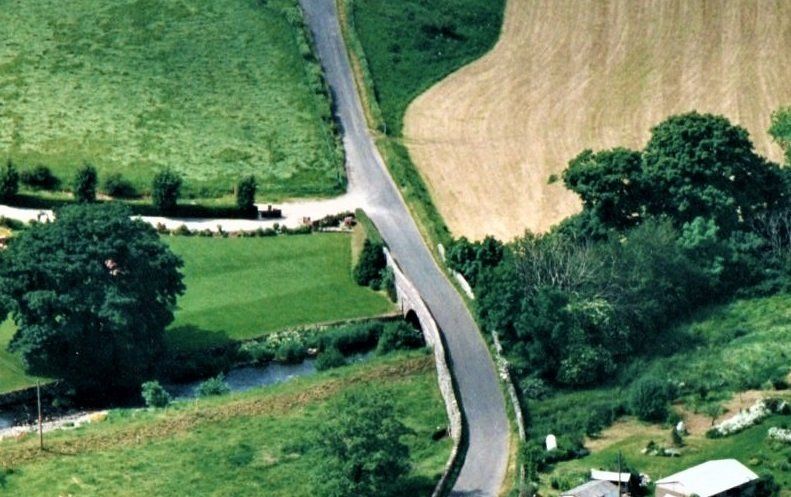River edge Bund bordering the Flood plain field below the bridge
Back to the HOME page:
Apparently, Henry Little has given permission for the raised land, (river edge bund) immediately below the bridge to be lowered allowing flood water to access the flood plain, (his low lying field) as soon as it passes through the bridge.

Comment:
The funnelling effect of the bridge only allows a certain amount of flood mode water, (combined volume/current) through the arch at a specific time, and no more.
The funnelling effect of the bridge only allows a certain amount of flood mode water, (combined volume/current) through the arch at a specific time, and no more.

Just a simple experiment with a household funnel will reveal that it has limitations of how much flow capacity it can handle. When the liquid "input" is increased, the "output" flowrate does not follow up, but remains minimal, the funnel then stacks and overflows.
On a larger scale, MILLHOUSE
Bridge has the same phenomenon, which becomes seriously overwhelmed during extreme storms, unable to accommodate the sheer volume of the inflamed river in full spate.
For more about the history, plus the very realistic negative characteristics of MILLHOUSE
bridge, visit "the Bridges" page. https://www.millhouse-hesketnewmarket.com/the-bridges
But now, when the river becomes swollen during extreme storms, it completely overwhelms the 120 year old single arch bridge, (now deprived of it's original overflow path), to induce it's function to become a "dam". It then routinely funnels/stacks the river to unprecedented levels upstream, and to the mercy of the vulnerable properties in the village.
The bund bordering the flood plain, (Henry's field) plays NO part in this routine, therefore it needs to be retained.

By carrying out the proposed quite unnecessary work, (on the lower side of the bridge) on Henry's river bank will NOT IN ANY WAY increase the flow capacity of the bridge,
but just undo valuable work done early last century to prevent the field flooding during relatively lower levels of the swollen river.
Henry needs to be justly warned that by removing or flattening the bund in his field it will cause his field to flood much more frequently during relatively lower river levels, during regular periods when there is absolutely no threat to the village,
(which is why the bund was initially installed by the Summers, who owned the field at the time). Henry will have no alternative but to move his livestock out of this low lying field during these more frequent periods.
Also, Henry needs to be reassured that he will not have to foot the bill for the reinstallation of the bund himself, when it is discovered what happens!
The "orriginal overflow path for the bridge" used to convey the excess flood water to Henry's low lying field/flood plain very efficiently, "and only when required".
The "orriginal overflow path for the bridge" used to convey the excess flood water to Henry's low lying field/flood plain very efficiently, "and only when required".

The sooner the original overflow/by-pass for the river Caldew bridge is reinstated, the sooner the properties in MILLHOUSE
will actually become desirable and marketable, (as they used to be).
Sadly, another flooding event and more hardship may have to be experienced before the-powers-that-be individuals are completely convinced about the very realistic and proven facts laid out on the pages of this website.

